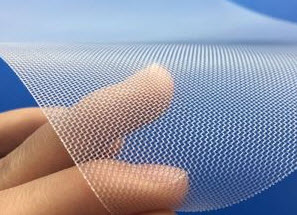Hernia Mesh Recall
From 2005 to 2018, the FDA issued several manufacturers recalls with over 21,000 units being affected. There are many reasons why the FDA has to recall some of the hernia mesh products.
However, among the main reasons were the multiple reports of device failures, organ injuries, and serious complications following hernia mesh surgeries. Other reasons included improper packaging.
The companies that have had their products recalled include Bard Davol, Ethicon, and Atrium Medical. Here is a list of the hernia mesh products that have been recalled;
-
Bard Composix Kugel hernia patch
-
Atrium Medical C-QUR hernia mesh
-
Ethicon Proceed Surgical mesh
-
Ethicon Physiomesh Flexible Composite mesh
In most cases, the recalled hernia mesh products were found to be the cause of some of the most serious side effects and complications in patients.
Hernia mesh types, surgery, issues, removal, complications and recall
A hernia mesh, or otherwise called surgical mesh, is basically a medical device that is used to support damaged tissue around a healing hernia. In fact, a huge number of the hernia surgeries performed in the US every year involve the use of a hernia mesh.
Hernia mesh types
The hernia mesh products come in different shapes and sizes. Since there are specific types and sizes of the hernias, the hernia mesh devices are designed differently to suit every situation. Aside from that, the hernia mesh devices use a couple of predominant materials such as polyester gore tex, polypropylene, and animal-derived tissue. All these contribute to the classification of hernia mesh products.
With that said, the hernia mesh products are designed to be used in various situations which include;
-
Patches- these are meant to go over or under a damaged or weakened tissue
-
Plugs- these fit or go inside the hole in the tissue
-
Sheets- these are often custom cut and fitted to suit every uniquely sized hernia
Also, each type of hernia mesh product falls under other categories. For instance, each material used to make the hernia mesh is designed to work in a particular way while inside the body. This is because the hernias vary in different patients. For this reason; the different options are made available so that everyone can receive the best results from their hernia repair surgery.
Absorbable
The absorbable type of hernia mesh degrades over time and loses its strength. It's more of a short term solution used for patients who are expected to gradually grow new tissue that will provide enough strength to the repair.
Non-absorbable
This type of hernia mesh is meant to be a permanent fix. The non-absorbable hernia mesh is supposed to provide lasting strength and reinforcement to the area it’s placed, and it remains in the body indefinitely.
Animal-derived
Some patients would like a mesh with natural properties, and this is where the animal-derived hernia mesh comes into play. The materials used to make the hernia mesh is derived from the skin or intestines of animals such as cows or pigs. Additionally, this type of mesh is absorbable.
Hernia repair surgery with mesh
Before the invention of the hernia mesh, hernia repair surgeries were done without it. The only problem is that there was a higher risk of recurrence. That's why nowadays, hernia repair surgeries using the hernia mesh are much recommended. Not only does it lower the rate of recurrence, but it also shortens the recovery time. However, a number of researchers warn that there could be a serious trade-off considering hernia mesh complications have been rising during the past few years.
While surgery is the only viable treatment for repairing a hernia, the hernia mesh is used in about 90 percent of all these surgeries, according to the US Food and Drug Administration. There are minimally-invasive techniques that the doctors can use to implant the hernia mesh. This is basically referred to as laparoscopic surgery, and it only requires small incisions to implant the mesh.
Another technique is open repair surgery. This one requires large incisions that open the body to the hernia. The surgeon then attaches the mesh to the damaged tissues and afterward closes the wound. The laparoscopic surgery has a shorter recovery time, but it's a more expensive operation.

Contact us – we can help
If you’ve been harmed by using a Hernia Mesh, contact an attorney right away to find out if you have a case.
Depending on your circumstances, you might have a case against the device manufacturer, your doctor, or the medical organization.